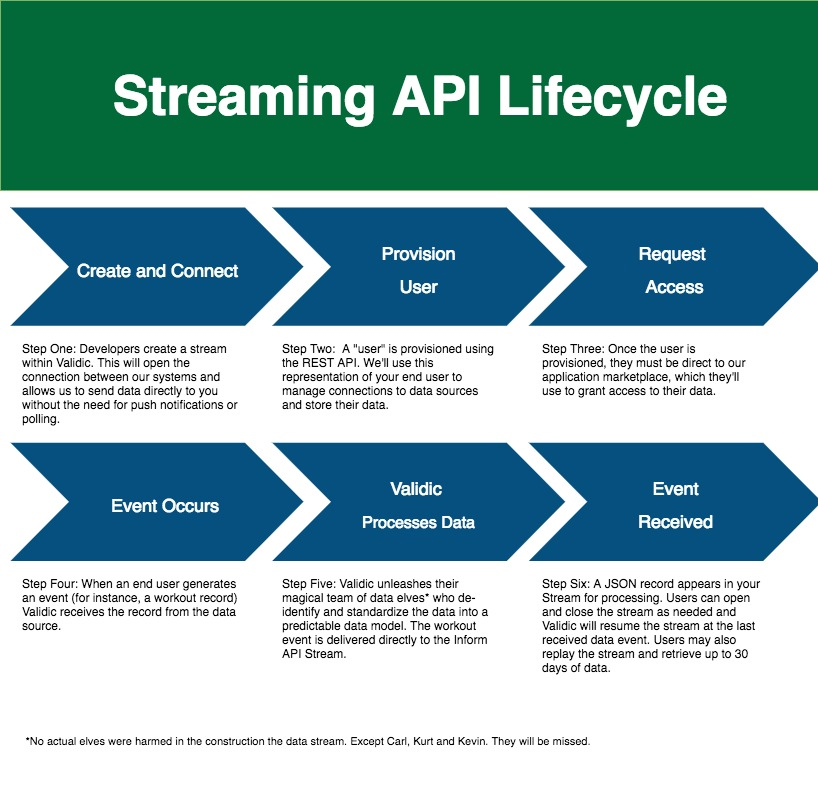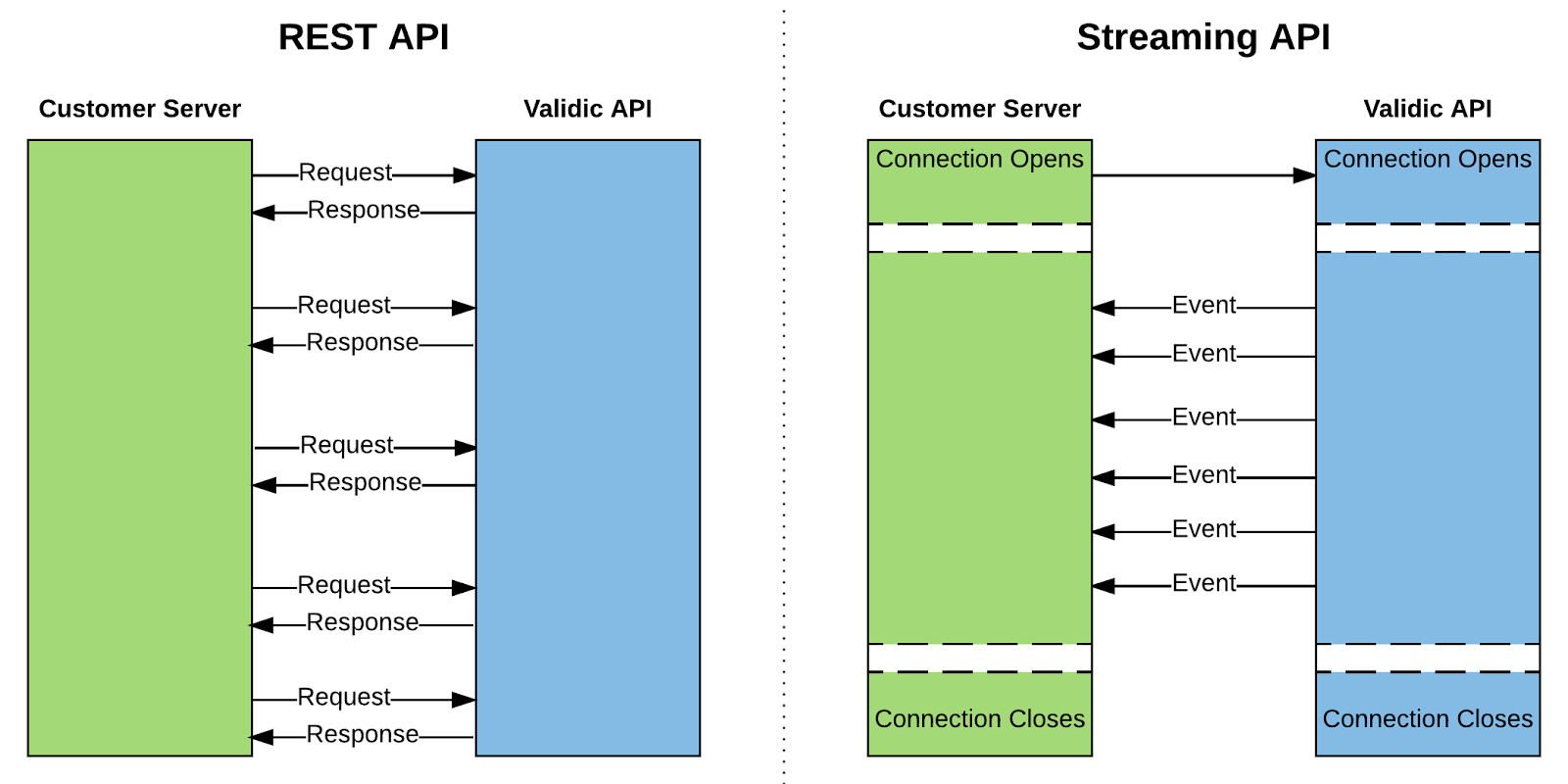What is the Inform Streaming API?
Getting your feet wet.
Validic offers two APIs to retrieve user health data from Inform:
- Streaming API (for all user data)
- REST API (for individual user data)
The Validic Streaming API gives developers access to all of their data through a continuous stream of data in near-realtime over an HTTP(S) connection using SSE (Server Sent Events). A streaming client will be pushed data, without any of the overhead associated with polling a REST endpoint.
The same data is available through both APIs and they can be used concurrently. For customers whose use case commands access to end users data as soon as an event occurs, the Streaming API is the best solution. At a high level, the Streaming API is best suited for customers who:
- Need access to data in near real-time
- Intend to consume and store end user data
- Would normally use push notifications or polling to extract data
How Does the Inform Streaming API Work
Quite simply, a Streaming API pushes events directly to you as soon as Validic receives the event. This is done by opening a persistent connection between Validic and your system. It's important to note, the streaming is used to GET data from end users, not to make writes or deletes. You'll still need to use the REST API for administrative functions like working with users.
This graphic shows a summary of how the Inform Streaming API works.

Differences between the Streaming and REST APIs?
Connecting to the Streams API requires keeping a persistent HTTP connection open with Validic. The connection to the Streams API will typically run in a process separate from the process handling HTTP requests from your user's. The process responsible for the persistent connection would typically handle any parsing, filtering, transformation, and/or aggregation required and store the result to a data store.

Next, we'll help you understand how a Streaming API works and then present you with documentation to help you implement and maintain the Inform Streaming API.
Updated about 2 years ago
